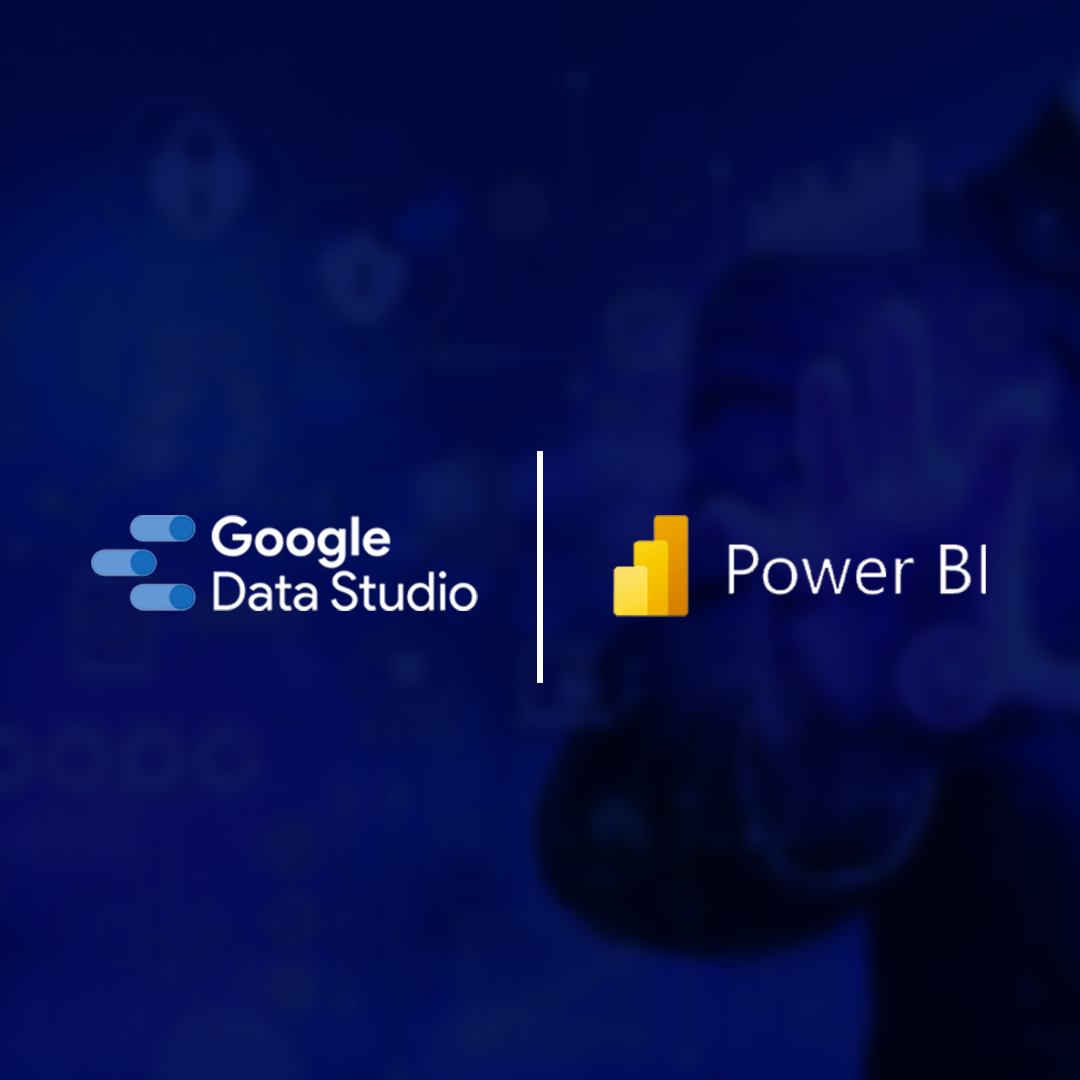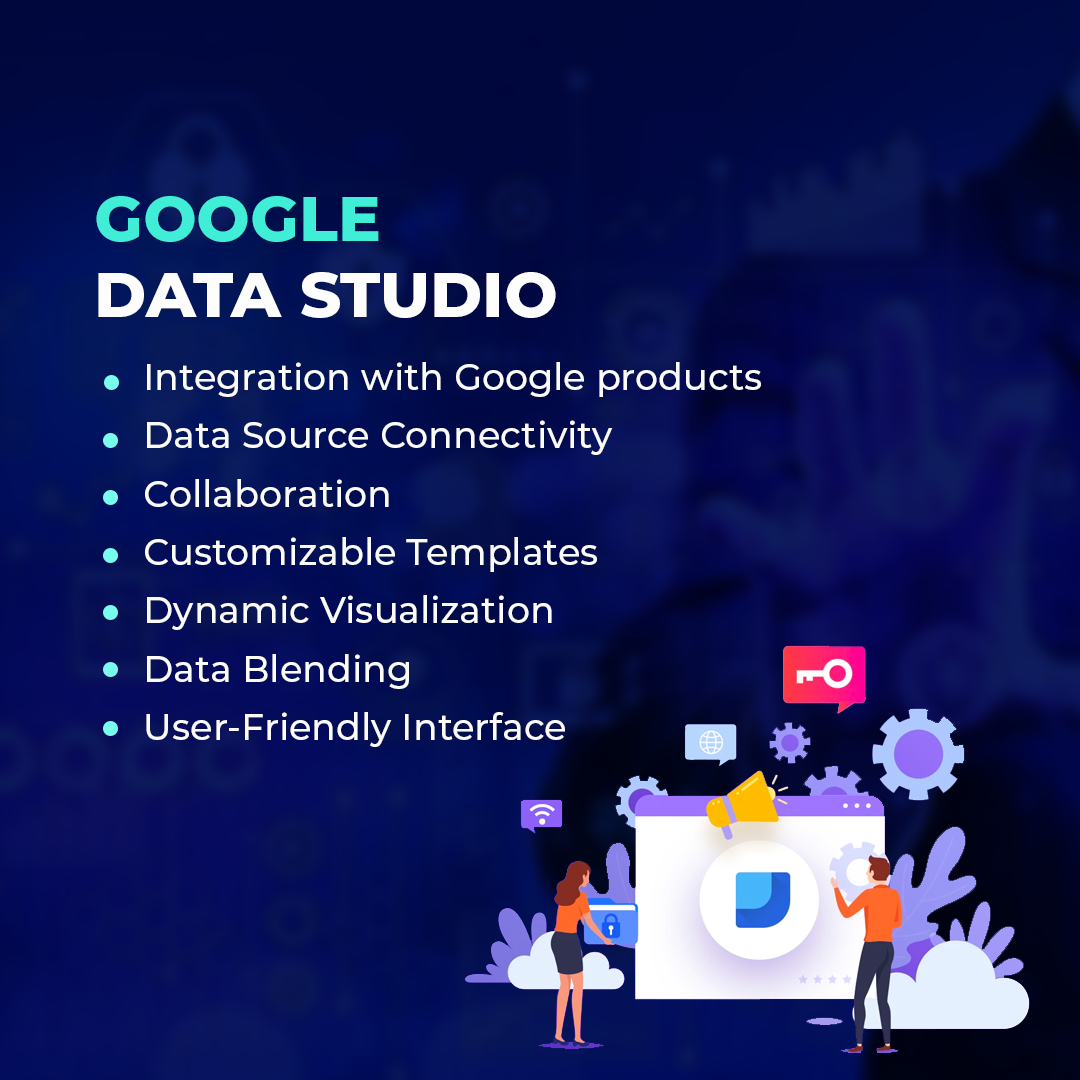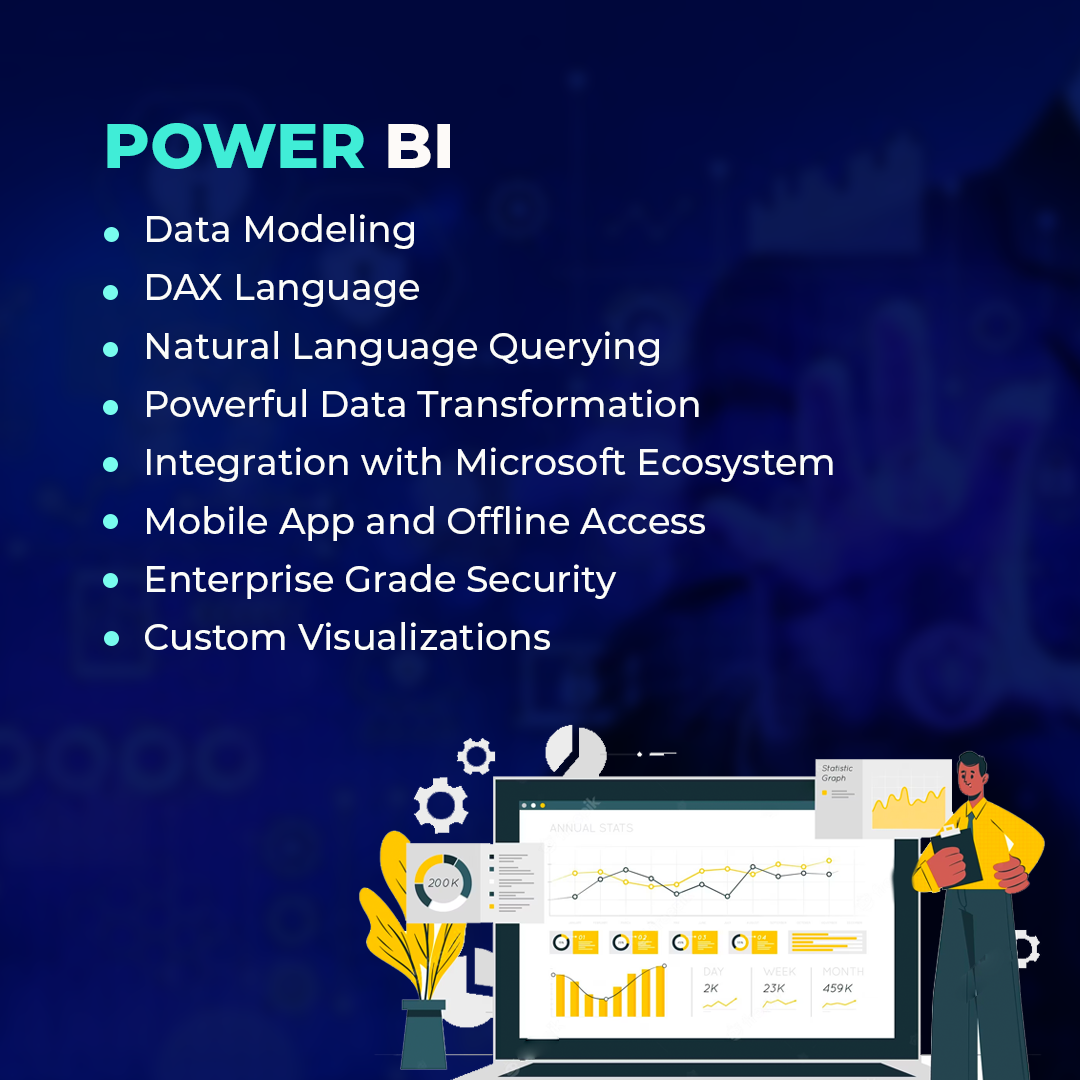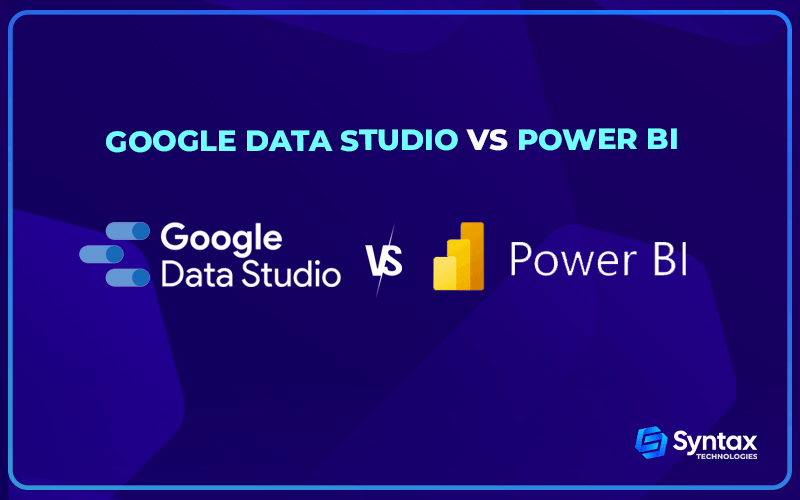In the rapidly evolving landscape of business intelligence and data analytics, tools that empower organizations to transform raw data into actionable insights have become indispensable. Among the frontrunners in this domain are Google Data Studio and Microsoft Power BI, two powerful platforms that allow users to create compelling and interactive data visualizations.
In this blog, we will embark on a comprehensive comparison of Google Data Studio and Power BI, exploring their key features, strengths, and weaknesses, to help you make an informed decision on which tool best aligns with your unique business needs and aspirations.
Overview of Google Data Studio and Power BI
Google Data Studio and Microsoft Power BI are two leading data visualization tools that help businesses analyze and interpret their data more effectively.
Google Data Studio, a cloud-based reporting solution, allows businesses to transform data from multiple sources into highly informative, easy-to-understand reports and dashboards. It’s especially lauded for its user-friendly interface and seamless integration with other Google products.
On the other hand, Power BI, a business analytics tool from Microsoft, is favored for its advanced reporting features, robust data modeling capabilities, and extensive customization options.
Both platforms have their unique strengths and potential limitations, and understanding these is crucial in deciding which tool best suits your organizational needs.

Features of Google Data Studio vs Power BI
Google Data Studio Features:
Integration with Google Products: Seamlessly connects with other Google products allowing easy data extraction and visualization.
Data Source Connectivity: Supports a wide range of data connectors ensuring efficient data integration from various sources.
Collaboration and Sharing: Enables real-time collaboration, making it easy for teams to work together on reports and dashboards.
Customizable Templates: Offers a gallery of customizable templates and community-created reports, saving time on design and accelerating the dashboard creation process.
User-friendly Interface: Known for its intuitive drag-and-drop interface, making it accessible to users.
Dynamic Visualization Options: Provides a wide range of charts, graphs, and other visual elements to create dynamic and interactive reports.
Data Blending: Allows users to blend data from different sources into a single visualization, making it easier to analyze data holistically.

Power BI Features:
Data Modeling: Empowers users to create data models and relationships between various data sources, facilitating in-depth analysis and complex reporting.
DAX Language: Utilizes Data Analysis Expressions (DAX) language, which enables the creation of custom calculations and measures for more sophisticated data manipulation.
Natural Language Querying: Offers a natural language querying feature, allowing users to ask questions about their data in plain English and receive relevant visualizations.
Powerful Data Transformation: Provides robust data transformation capabilities, allowing users to clean, reshape, and enhance data within the platform itself.
Integration with Microsoft Ecosystem: Seamlessly integrates with other Microsoft products, for enhanced data access and collaboration.
Mobile App and Offline Access: Allows users to access reports and dashboards on mobile devices through a dedicated mobile app, and supports offline access to reports for on-the-go analysis.
Enterprise-grade Security: Comes with advanced security features, ensuring data privacy and compliance with industry standards.
Custom Visualizations: Supports the use of custom visualizations created by the Power BI community.

Pros and Cons of Using Google Data Studio
Pros of Using Google Data Studio:
- Free and accessible for all business sizes.
- Seamless integration with Google products.
- Wide range of data connectors for diverse data sources.
- Real-time collaboration for efficient teamwork.
- Interactive and customizable reports with a user-friendly interface.
- Cloud-based, enabling easy access from anywhere.
- Scheduled reporting for automated insights delivery.
Cons of Using Google Data Studio:
- Limited advanced analytics capabilities.
- Data volume limitations for large datasets.
- Limited customization options compared to other BI tools.
- Dependency on Google products may not suit all businesses.
- Learning curve for mastering advanced features.
- Lack of native data storage, relying on external sources.
- Limited offline access without an internet connection.
- Support options may be limited for critical reporting needs.
Pros and Cons of Using Power BI
Pros of Using Power BI:
- Powerful data modeling and relationship capabilities for in-depth analysis.
- Utilizes DAX language for custom calculations and measures.
- Natural language querying for intuitive data exploration.
- Robust data transformation capabilities for data cleaning and shaping.
- Seamless integration with Microsoft ecosystem products.
- Dedicated mobile app and offline access for on-the-go analysis.
- Enterprise-grade security features for data privacy and compliance.
- Extensive library of custom visualizations for expanded visualization options.
Cons of Using Power BI:
- Requires a paid subscription for full functionality.
- Steeper learning curve, especially for non-technical users.
- Limited integration with non-Microsoft data sources and platforms.
- Some advanced features may be limited to premium versions.
- Large datasets may lead to performance issues.
- Native data storage limitations, necessitating external sources.
- Limited support for real-time collaboration compared to Google Data Studio.
- Licensing costs may be prohibitive for smaller businesses.
Comparison of Data Visualization Tools in both Platforms
Comparing Security Settings in Google Data Studio and Power BI
Google Data Studio:
Google Data Studio provides standard security measures, such as data encryption during transmission (HTTPS) and user authentication through Google accounts. While suitable for basic security needs, it lacks advanced security features like row-level security and granular access control. This may limit its usability for organizations handling sensitive data or requiring strict data governance.
Power BI:
Power BI offers a comprehensive security framework with data encryption in transit and at rest, ensuring robust data protection. It supports various authentication methods, including Single Sign-On (SSO), and allows fine-grained access control with row-level security. Detailed audit logs and activity monitoring features help organizations comply with regulations and track user interactions. Power BI’s data gateway and third-party integration security enhance its suitability for large enterprises and industries with stringent security requirements.
Analyzing Cost Comparison between Google Data Studio and Power BI
Google Data Studio and Power BI follow two distinct pricing models.
Google Data Studio is entirely free to use, making it an attractive choice for startups and small-to-midsize businesses on a tight budget. However, it’s worth noting that while the tool itself is free, some data connectors, especially third-party ones, might come with their own costs.
On the other hand, Power BI operates on a freemium model. Power BI Desktop and Power BI Mobile are free, but for advanced features such as publishing reports, collaborating with colleagues, and more extensive data capacity, you’ll need to upgrade to Power BI Pro or Power BI Premium.
Power BI Pro is priced at $9.99 per user/month, while Power BI Premium is more expensive and is designed for larger businesses, with prices starting at $4,995 per month. This model allows flexibility and scaling as your business grows, but small businesses or individual users may find the cost prohibitive.
Articles you may like:
?Google Sheets vs. Excel: A Head-to-Head Comparison?
Conclusion
Choosing between Google Data Studio and Power BI ultimately comes down to your organization’s specific needs, budget, and the technical capabilities of your team.
Google Data Studio offers an intuitive and user-friendly interface, basic data visualization capabilities, and a seamless integration with Google products, all at zero cost – making it a great option for small businesses and teams just starting with data visualization.
Meanwhile, Power BI excels with advanced data modeling, broad data source connectivity, and enhanced security features, but at a higher price point. It caters well to larger enterprises that require in-depth analysis and are prepared to invest in the platform.

